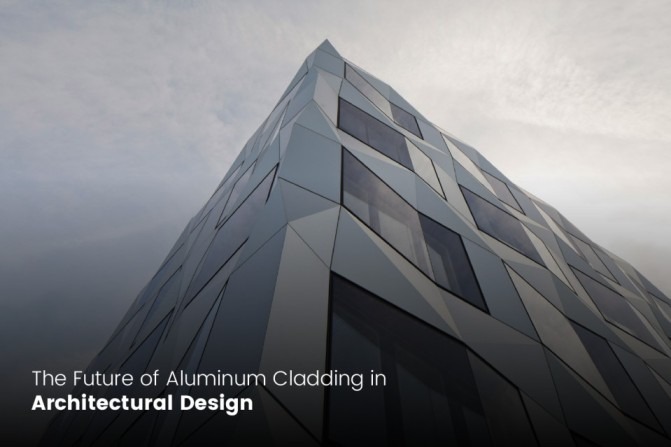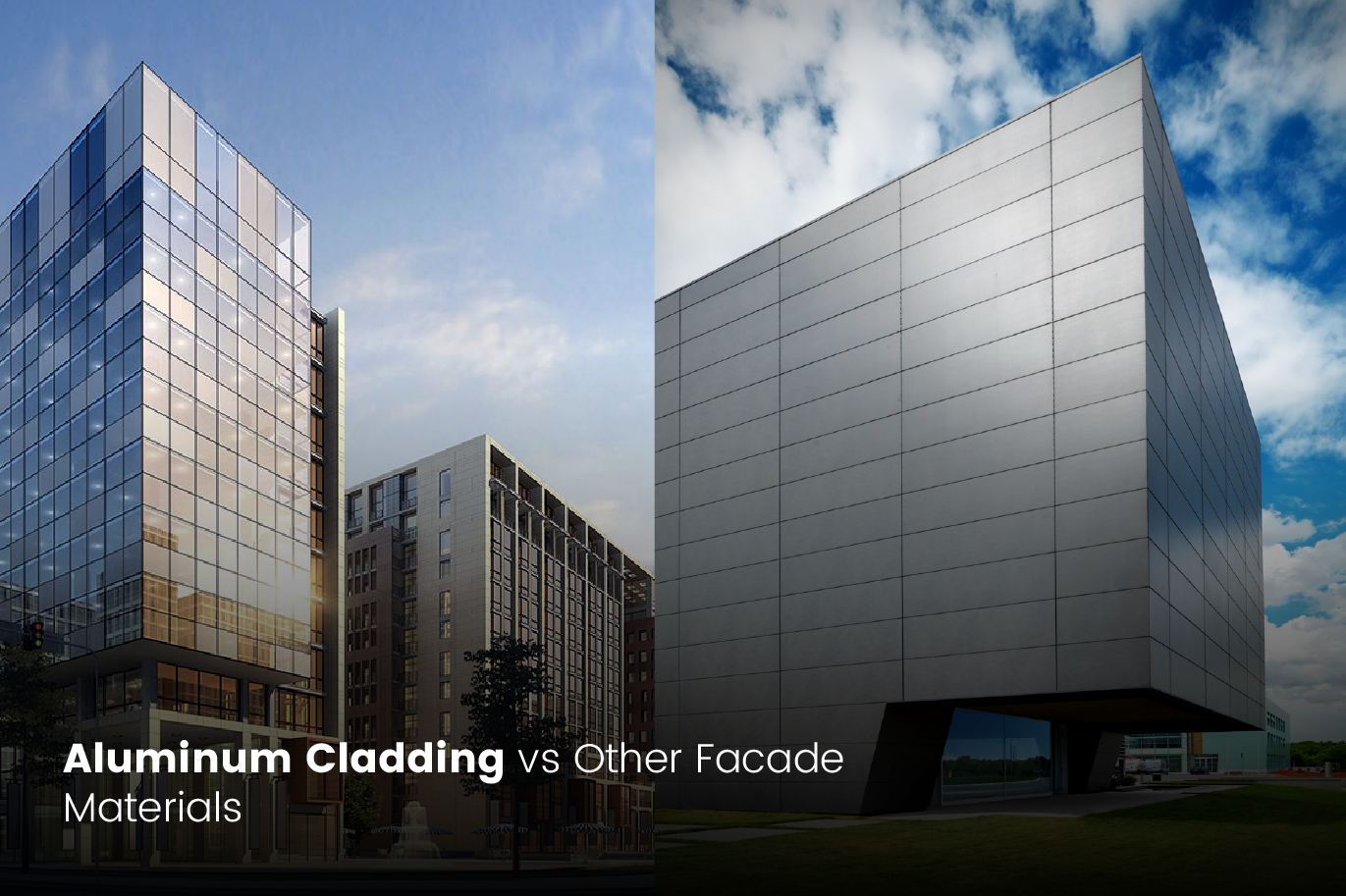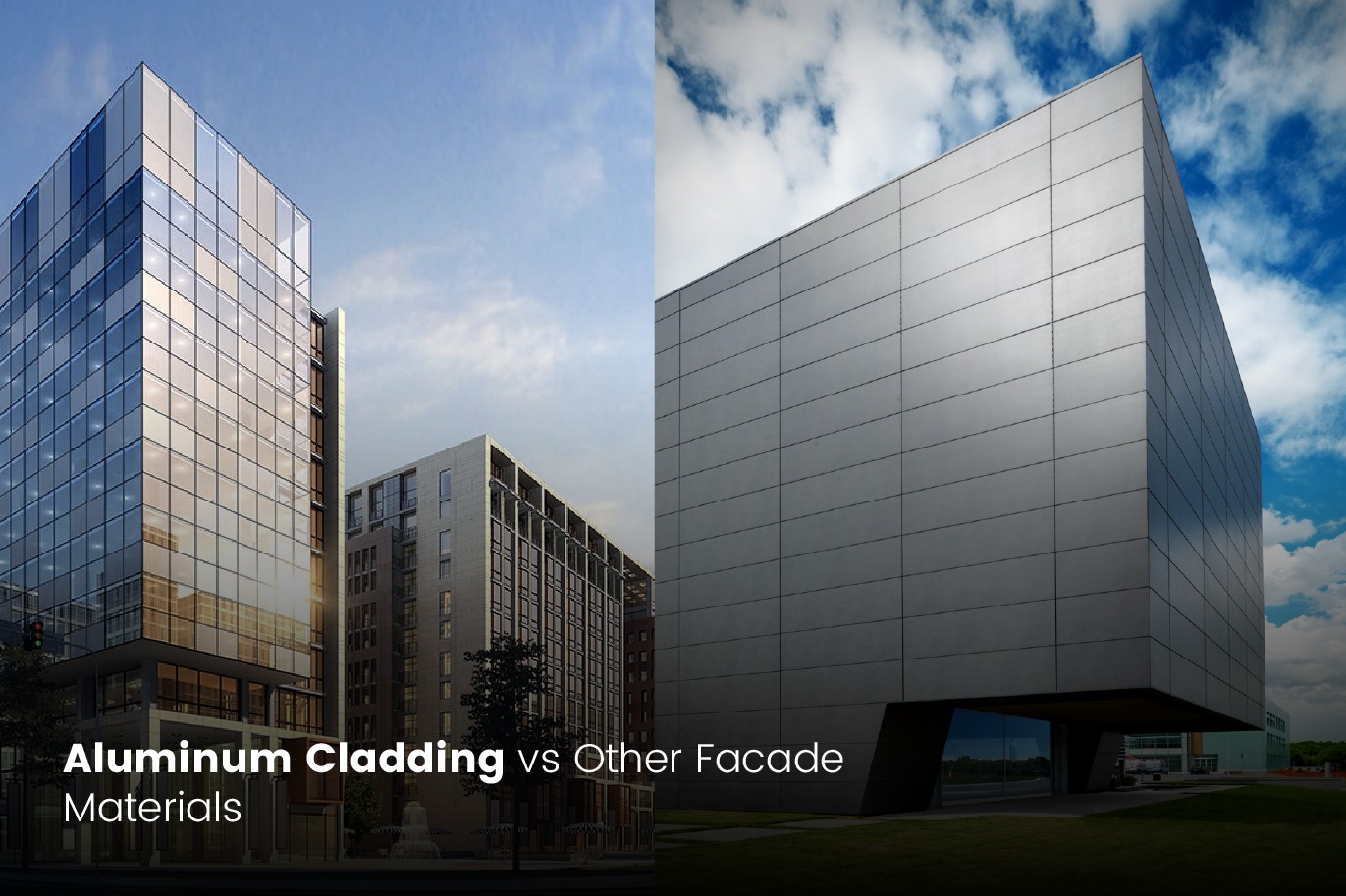.jpg)
Common Mistakes to Avoid When Installing Aluminum Cladding
Installing aluminum cladding is a great way to enhance the appearance, durability, and energy efficiency of a building. However, improper installation can lead to costly repairs, structural issues, and reduced lifespan. To achieve a seamless and long-lasting installation, avoid these common mistakes and follow industry best practices. 1. Poor Surface Preparation A clean, dry, and properly prepped surface is essential for the adhesion and longevity of aluminum cladding. Any dust, moisture, or debris can cause bonding issues, premature wear, and even corrosion over time. Before installation, ensure the surface is thoroughly cleaned and dried to prevent future damage. 2. Incorrect Fastening Techniques Using the wrong fasteners or improper techniques can compromise the structural integrity of the cladding. Always follow manufacturer guidelines for fastening methods, ensuring that screws, rivets, or adhesives are suitable for the material and environmental conditions. Poor fastening can lead to loose panels, instability, and potential safety hazards. 3. Neglecting Expansion Gaps Aluminum expands and contracts with temperature fluctuations. Failing to leave adequate expansion gaps can cause warping, buckling, or panel misalignment over time. To prevent this, ensure there is enough space for natural expansion while maintaining a secure and seamless finish. 4. Ignoring Local Building Codes & Regulations Every region has specific building codes and safety regulations regarding cladding installation. Overlooking these codes can result in legal issues, fines, or forced modifications. Before starting the installation, consult local authorities and ensure compliance with industry standards for a hassle-free project. 5. Choosing the Wrong Installation Team Even high-quality aluminum cladding can fail if installed incorrectly. Hiring a specialized and reputable installation team is crucial for ensuring proper alignment, fastening, and finishing. A professional team will help you avoid common installation errors and guarantee a long-lasting, visually appealing, and weather-resistant cladding solution. By avoiding these common mistakes and following best practices, you can ensure a successful aluminum cladding installation that enhances your building’s aesthetics, durability, and efficiency. Always prioritize surface preparation, proper fastening, expansion gaps, legal compliance, and expert installation to achieve the best results. For more construction insights, expert tips, and best practices on aluminum cladding, stay tuned to our blog!

The Future of Aluminum Cladding in Architectural Design
Aluminum cladding has become a staple in modern architectural design, offering a combination of durability, versatility, and aesthetic appeal. As the industry evolves, several key trends and advancements are shaping the future of aluminum cladding. 1. Innovative & Customizable Designs Architects are leveraging aluminum cladding’s flexibility to create unique, intricate, and visually striking building exteriors. With advancements in manufacturing techniques, designers can now experiment with 3D textures, perforations, and custom finishes to achieve distinct architectural identities. 2. Integration of Smart Technologies The demand for smart and energy-efficient buildings has led to the integration of cutting-edge technologies into aluminum cladding. This includes: Solar-integrated panels that contribute to renewable energy generation. Energy-efficient coatings that improve thermal insulation and reduce energy consumption. Self-cleaning surfaces that minimize maintenance efforts. 3. Sustainability & Eco-Friendly Practices With increasing emphasis on green building materials, manufacturers are adopting sustainable practices such as: Using recycled aluminum to minimize environmental impact. Developing low-carbon production methods to reduce emissions. Enhancing recyclability and reuse strategies for old panels. 4. Enhanced Performance & Durability Future innovations aim to improve weather resistance, fire safety, and acoustic insulation in aluminum cladding. New coating technologies and composite panel enhancements will ensure greater protection against corrosion, UV exposure, and harsh climates. The future of aluminum cladding is bright, with advancements that enhance aesthetics, functionality, and sustainability. As technology evolves, aluminum cladding will continue to be a top choice for architects and builders looking to combine modern design with durability and energy efficiency. For more updates on architectural trends, aluminum innovations, and construction best practices, stay connected with us!
.png)
Sustainable and Eco-Friendly Aluminum Cladding Solutions
As the construction industry moves towards sustainable and eco-friendly practices, aluminum cladding is playing a key role in reducing environmental impact. Let’s explore how aluminum cladding contributes to green building solutions and helps minimize carbon footprints. 1. 100% Recyclability One of aluminum’s biggest advantages is its endless recyclability. Unlike other materials, aluminum cladding can be recycled multiple times without losing its properties. This helps reduce waste, energy consumption, and environmental harm. 2. Energy Efficiency & Insulation Aluminum cladding enhances thermal insulation, reducing the need for excessive heating and cooling. This leads to lower energy consumption, decreased carbon emissions, and cost savings on utility bills. 3. Minimal Maintenance & Longevity Aluminum cladding requires little maintenance, making it a sustainable choice in the long run. Unlike materials that require frequent repairs and replacements, aluminum’s durability and resistance to weather conditions contribute to reduced resource usage over time. 4. Sustainable Manufacturing & Low-Carbon Production Modern manufacturers are adopting eco-friendly production methods, such as: Using recycled aluminum in manufacturing processes. Implementing low-energy production techniques to reduce emissions. Minimizing waste and resource consumption during fabrication Final Thoughts Aluminum cladding is not only a durable and visually appealing solution but also a sustainable and environmentally friendly material. By choosing recyclable, energy-efficient, and low-maintenance aluminum cladding, builders can contribute to a greener future while enhancing building aesthetics and performance. For more insights into sustainable architecture, eco-friendly building materials, and energy-efficient solutions, follow our blog for the latest updates and expert insights!

Aluminum Cladding vs. Other Facade Materials: Which One is Best?
When choosing the right facade material for your project, you need to consider durability, aesthetics, maintenance, cost, and energy efficiency. Aluminum cladding is often compared to alternatives like glass, wood, and vinyl, each offering unique benefits and drawbacks. Here’s a detailed comparison to help you make an informed decision. 1. Durability & Weather Resistance Aluminum Cladding: Highly resistant to corrosion, rust, and extreme weather conditions. It retains its structural integrity over time, making it a long-lasting option. Wood: Prone to rot, insect infestations, and weather damage if not properly treated and maintained. Glass: While aesthetically pleasing, it is susceptible to breakage and requires strong framing to withstand environmental conditions. Vinyl: Can crack or fade over time due to UV exposure and temperature fluctuations. 2. Aesthetic Versatility & Customization Aluminum Cladding: Available in a wide range of colors, textures, and finishes. It allows for modern, sleek, and customizable designs. Wood: Offers a warm, natural look, but requires staining or painting to maintain its appearance. Glass: Provides a contemporary and elegant feel, but offers limited customization options beyond tinting or frosting. Vinyl: Comes in various colors, but lacks the sophisticated finishes that aluminum and glass provide. 3. Maintenance & Longevity Aluminum Cladding: Low maintenance, requiring only occasional cleaning to retain its appearance. Wood: Requires frequent sealing, painting, and repairs to prevent deterioration. Glass: Needs regular cleaning to maintain its transparency and aesthetic appeal. Vinyl: Requires moderate maintenance, as it can crack or warp over time. 4. Cost-Effectiveness & Return on Investment Aluminum Cladding: Higher initial cost but long-term savings due to its durability and low maintenance. Wood: Lower upfront cost, but high maintenance expenses over time. Glass: Expensive to install and requires additional insulation for energy efficiency. Vinyl: Generally affordable, but may need replacement sooner than aluminum. 5. Energy Efficiency & Sustainability Aluminum Cladding: Provides excellent thermal insulation, improving energy efficiency and reducing heating/cooling costs. It is also 100% recyclable. Wood: A renewable resource, but requires protective treatments that may impact sustainability. Glass: Poor thermal insulation without additional coatings or treatments. Vinyl: Offers decent insulation, but is not as environmentally friendly as aluminum. Final Thoughts Each material has its strengths, but aluminum cladding stands out for its durability, low maintenance, energy efficiency, and modern aesthetic appeal. It’s an ideal choice for those looking for a long-lasting, stylish, and sustainable facade solution. For more expert insights on construction materials, energy-efficient solutions, and design innovations, stay tuned to our blog!

Aluminum Cladding vs. Other Facade Materials: Which One is Best?
When choosing the right facade material for your project, you need to consider durability, aesthetics, maintenance, cost, and energy efficiency. Aluminum cladding is often compared to alternatives like glass, wood, and vinyl, each offering unique benefits and drawbacks. Here’s a detailed comparison to help you make an informed decision. 1. Durability & Weather Resistance Aluminum Cladding: Highly resistant to corrosion, rust, and extreme weather conditions. It retains its structural integrity over time, making it a long-lasting option. Wood: Prone to rot, insect infestations, and weather damage if not properly treated and maintained. Glass: While aesthetically pleasing, it is susceptible to breakage and requires strong framing to withstand environmental conditions. Vinyl: Can crack or fade over time due to UV exposure and temperature fluctuations. 2. Aesthetic Versatility & Customization Aluminum Cladding: Available in a wide range of colors, textures, and finishes. It allows for modern, sleek, and customizable designs. Wood: Offers a warm, natural look, but requires staining or painting to maintain its appearance. Glass: Provides a contemporary and elegant feel, but offers limited customization options beyond tinting or frosting. Vinyl: Comes in various colors, but lacks the sophisticated finishes that aluminum and glass provide. 3. Maintenance & Longevity Aluminum Cladding: Low maintenance, requiring only occasional cleaning to retain its appearance. Wood: Requires frequent sealing, painting, and repairs to prevent deterioration. Glass: Needs regular cleaning to maintain its transparency and aesthetic appeal. Vinyl: Requires moderate maintenance, as it can crack or warp over time. 4. Cost-Effectiveness & Return on Investment Aluminum Cladding: Higher initial cost but long-term savings due to its durability and low maintenance. Wood: Lower upfront cost, but high maintenance expenses over time. Glass: Expensive to install and requires additional insulation for energy efficiency. Vinyl: Generally affordable, but may need replacement sooner than aluminum. 5. Energy Efficiency & Sustainability Aluminum Cladding: Provides excellent thermal insulation, improving energy efficiency and reducing heating/cooling costs. It is also 100% recyclable. Wood: A renewable resource, but requires protective treatments that may impact sustainability. Glass: Poor thermal insulation without additional coatings or treatments. Vinyl: Offers decent insulation, but is not as environmentally friendly as aluminum. Final Thoughts Each material has its strengths, but aluminum cladding stands out for its durability, low maintenance, energy efficiency, and modern aesthetic appeal. It’s an ideal choice for those looking for a long-lasting, stylish, and sustainable facade solution. For more expert insights on construction materials, energy-efficient solutions, and design innovations, stay tuned to our blog!

Is Aluminum Cladding a Good Investment?
Is Aluminum Cladding a Good Investment? When selecting building materials, aluminum cladding is a popular option due to its durability, modern appearance, and low maintenance requirements. However, is it truly a cost-effective and worthwhile investment? This article explores the cost-benefit analysis of aluminum cladding and why it’s considered a smart choice for both residential and commercial properties. 1. Initial Costs vs. Long-Term Savings Many property owners hesitate due to the initial cost of aluminum cladding, which is often higher than vinyl or wood siding. However, its long-term benefits outweigh the upfront expense. Durability: Aluminum is resistant to corrosion, rust, and weather damage, ensuring that it lasts for decades without requiring frequent replacements. Low Maintenance: Unlike wood, which needs regular staining and sealing, aluminum cladding only requires occasional cleaning to maintain its appearance. Cost-Effectiveness: While the initial investment is higher, aluminum cladding leads to significant cost savings over time due to minimal upkeep and repairs. 2. Energy Efficiency & Cost Reduction One of the biggest advantages of aluminum cladding is its contribution to energy efficiency, leading to lower utility bills. Thermal Insulation: Aluminum cladding helps regulate indoor temperatures, reducing the need for excessive heating or cooling. Reflective Coatings: Some aluminum panels come with heat-reflective coatings, improving energy efficiency in hot climates. Reduced Carbon Footprint: By minimizing energy consumption, aluminum cladding supports eco-friendly building practices. 3. Increased Property Value & Resale Appeal Investing in high-quality materials enhances a property's market value and buyer appeal. Modern Aesthetic: Aluminum cladding gives buildings a sleek, contemporary look, making them more attractive to potential buyers. Durability as a Selling Point: Future buyers appreciate low-maintenance, long-lasting materials, making aluminum a desirable choice. Higher Resale Value: Homes and commercial properties with durable, energy-efficient materials often sell at premium prices 4. Sustainability & Environmental Benefits With the construction industry shifting toward sustainable practices, aluminum cladding aligns with green building trends. 100% Recyclable: Unlike vinyl siding, aluminum can be recycled indefinitely without losing its quality. Low Environmental Impact: Many manufacturers use eco-friendly production methods to reduce carbon emissions. Contributes to Green Certifications: Using sustainable materials like aluminum can help buildings earn LEED or BREEAM certifications. Final Verdict: Is Aluminum Cladding Worth the Investment? Absolutely! While the initial costs may be higher than other facade materials, the long-term benefits of aluminum cladding—including durability, energy savings, low maintenance, and increased property value—make it a wise investment for both homeowners and businesses. If you're considering upgrading your property with aluminum cladding, it's a decision that offers both
